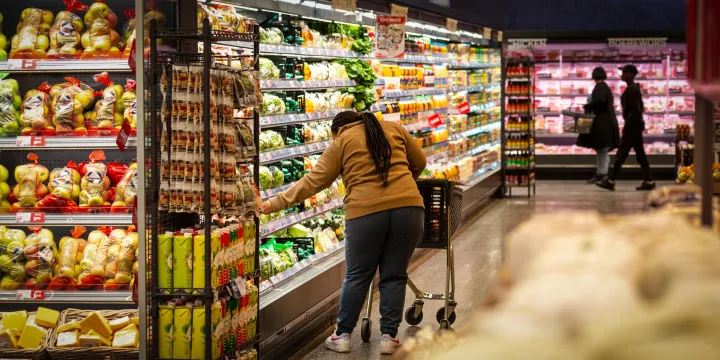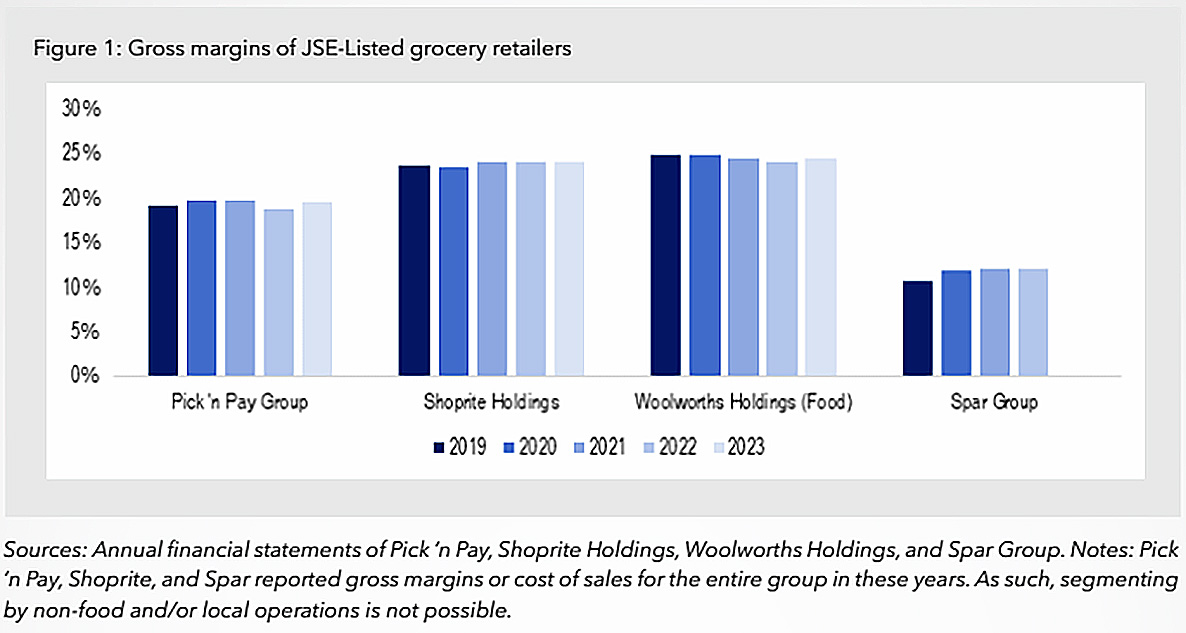COST OF LIVING
What goes up, must go down: Compcom’s latest Food Pricing Report shows prices are sticky

The Consumer Goods Council, though, says the commission is looking for collusion in the wrong place, because rolling blackouts, local government and a range of external factors are causing the rising prices of food.
Overall inflation might have declined marginally, but food price inflation is nearly twice that for other goods and services, according to the latest edition of the Competition Commission’s Essential Food Pricing Monitoring Report.
That doesn’t mean retailers and manufacturers are colluding, though, as the industry has hit back against claims it is profiteering.
The commission has been monitoring price movements of essential foods such as sunflower oil, bread, maize meal, meat, fruit and vegetables since the outbreak of the pandemic in March 2020, in an apparent attempt to ensure transparency around producers’ and retailers’ profit margins.
In its latest report released on Wednesday, the commission notes that while upstream commodity prices declined in the first half of this year, these price drops haven’t been seen in reduced producer or retail prices – although it does acknowledge that producers and retailers are facing other cost pressures.
It has also highlighted grocery retailer margins: compared with peers internationally, the commission has evidence of “rocket and feather” effects in maize meal, cooking oil and bread, and provides an overview of South Africa’s beef value chain.
About that “rocket and feather” effect, where prices are quick to rise in response to a cost increase but slow to fall when costs decrease: the commission’s biggest concern is around the potential competition issues.
Researchers from the universities of Stellenbosch and the Free State have found evidence for the “rocket and feather” effect in the local beef, maize meal, bread, sunflower oil and fresh milk value chains.
Global disruptions from the pandemic to the war in Ukraine are also driving food inflation, compounded by South Africa’s energy crisis.
Coining it?
Competition authorities in Canada, Ireland and the United Kingdom have recently published reports on the state of grocery retail in those countries, finding that their sectors were highly competitive, but the local competition commission believes South African retailers were much more profitable than international retailers.
“Total revenues in the South African grocery sector have grown by 38% since 2019 and 13% from 2022 to 2023. The top national grocery chains collectively grew their profits by 26%, from R13.8-billion in 2019 to R16.6-billion in 2023.”

This could be due to various factors, it said, including differences in the level of competition. In some markets like the UK, retailer margins are declining as discounters become more prominent due to the rising cost of living, but in South Africa, “margins increased between 2019 and 2022 before a recent decline primarily attributed to load shedding costs”.
Bread and wheat prices fell by about 10% during the first quarter of the year, but producer and retailer prices for bread increased by 3% each in this period and only started to drop in the second quarter of the year.
White maize prices (lagged three months) have declined by 23% since February but producer and retail prices for maize meal are yet to decline.
Cooking oil has been cheaper since a year ago, and while retailers cut their margins, they have been slower to reduce prices, resulting in expanding margins, the commission said.
Individually quick-frozen chicken price inflation remains lower than food inflation.
The local beef sector is becoming increasingly concentrated, with the number of commercial cattle farmers more than halving in the past 10 years: the top 10 cattle feedlots now account for almost 70% of cattle (up from 50% six years ago) and feedlots are increasingly integrated into abattoirs, with the top 10 slaughtering close to 50% of cattle.
This year, weaned calf prices have declined, but the retail price for beef cuts has not, with the retailer share reaching 40% of the shelf price – the highest share since January 2021.
In March, the commission launched its Fresh Produce Market Inquiry which will hopefully reveal a clearer picture of the causes of price increases.
‘Can’t absorb costs indefinitely’
Rolling blackouts, the after-effects of the pandemic, climate change, geopolitical factors, the rising cost of fuel and other economic headwinds are costing both producers and retailers billions.
In their latest results, Shoprite Checkers Group CEO Pieter Engelbrecht said if they were not forced to spend an extra R1.3-billion on diesel to power their generators, they could have passed higher returns to shareholders and their employees.
Shoprite first introduced its R5 value meals in April 2016; to date, its stores have sold more than 623 million R5 meals and R5 bread.
In 2017, it added a range of R5 deli meals, which include a large vetkoek (amagwinya), a chicken hot dog, and a fried egg and tomato sandwich.
In 2021, they included an eight-pack of sanitary pads in the R5 offering.
Engelbrecht told Daily Maverick that retailers are absorbing significant price increases to cushion consumers, but that they cannot do so indefinitely. Already, retailers are faced with steep rises in the cost of rice due to supply constraints.
The current egg shortage will add further pressure on retailers and consumers.
In July, Pick n Pay chairperson Gareth Ackerman said he hoped consumers would finally get some relief from interest rate hikes, which had been “brutal”.
“For our part, I am immensely proud of the contribution Pick n Pay has made to shielding consumers from the worst, keeping internal inflation below CPI and at less than half the current 14-year food inflation high of 14%.
“Our commitment to private and confined label rollout has made an enormous difference to the consumer. Our no-name brand, a feature of Pick n Pay since 1976, continues to help the consumer make ends meet.”
‘Not an isolated issue’
In response to the report, the Consumer Goods Council of South Africa (of which Ackerman is a co-chair), said elevated core inflation – which has a direct impact on businesses – as well as high operating costs across the entire food value chain, have largely been driven by external factors beyond the control of manufacturers and retailers.
“Added to this has been the financial impact of load shedding which has and continues to result in significant expenditure on backup power sources, including diesel.
“Load shedding-induced costs continue to escalate as the energy crisis worsens and it has so far been a herculean effort by food manufacturers and retailers to absorb the costs without passing them on to consumers.
“However, there is a limit to how long businesses can continue absorbing these costs without increasing prices to ensure viability.”
The council said the cost of doing business continues to rise, largely due to inefficiencies and service delivery issues at the local government level, the poor-performing port and rail freight sector (which have increased transport costs due to the heightened cost of road freight), as well as business crime.
“It is therefore important not to take food prices in isolation of all these material factors. The sooner the economic challenges we face as a country are resolved, the better for our members, consumers and the wider economy in general.”
‘It’s deceleration, not a decline’
NIQ’s State of the Retail Nation analysis for Q2 2023 shows that the local FMCG (fast-moving consumer goods) sector has made R621-billion in sales this year (13.5% increase), but despite the Consumer Price Inflation dropping to 4.7% in June, food inflation remains high, exceeding 10% for 12 consecutive months. It is currently 12%.
NIQ South Africa Consumer Panel commercial lead, Steve Randall, said: “The prevailing narrative is that decreasing inflation growth is great news and cause for celebration. However, the reality is that we are dealing with a deceleration, not a decline, with price increases slowing and settling but at a higher price point.”
Randall said when they asked consumers whether they were making changes to manage their overall expenses, 95% said yes, with more than half cutting back on discretionary spending, which also sees them seeking out the lowest possible prices. DM

















Comments - Please login in order to comment.